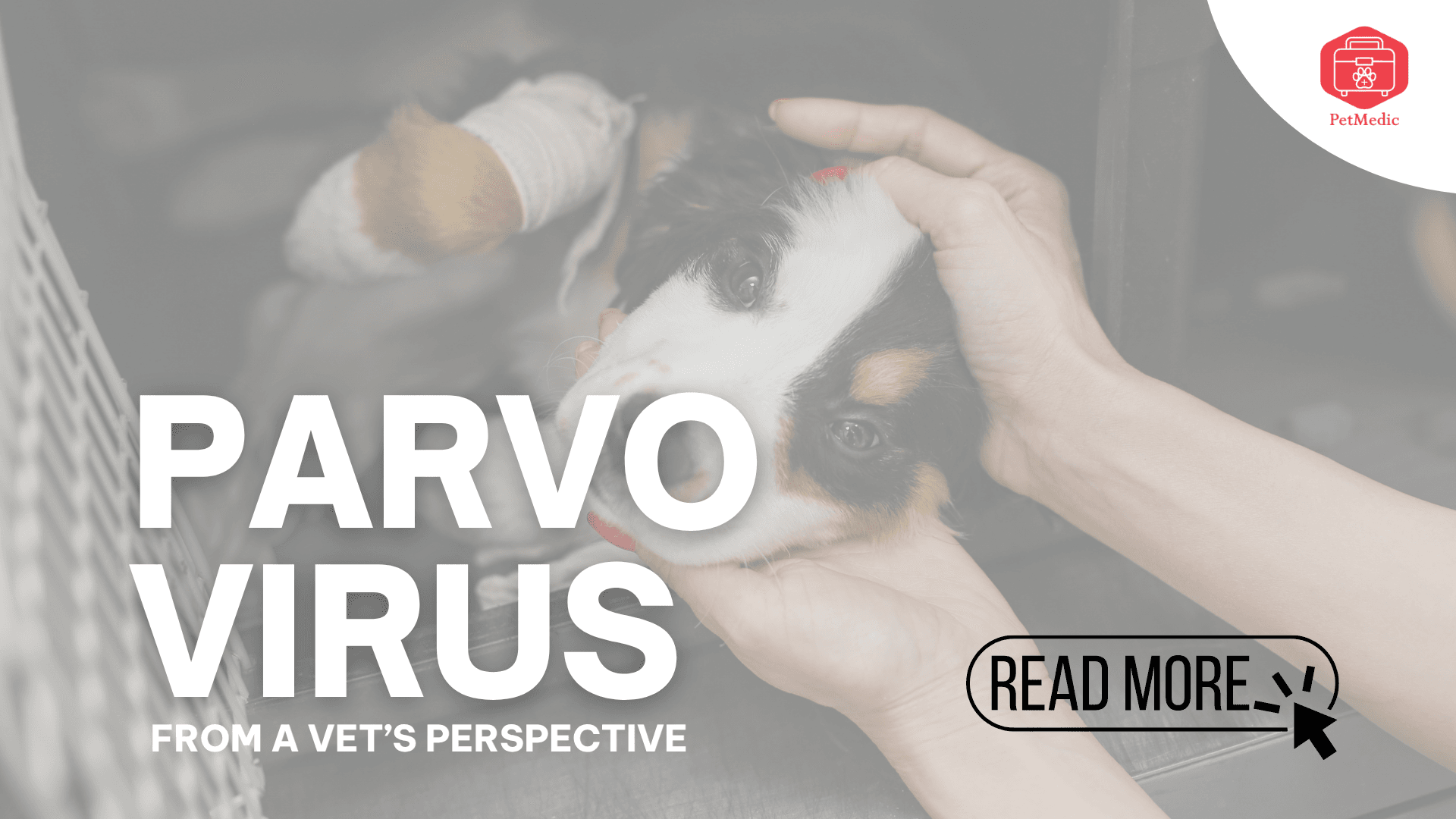From a Veterinarian’s Perspective
Canine parvovirus (CPV) remains one of the most serious and deadly viral diseases in dogs—even in 2025—despite the wide availability and reliability of vaccination. As a veterinarian, I continue to see cases of parvovirus, particularly in unvaccinated or incompletely vaccinated puppies, and occasionally even in adult dogs due to various risk factors. Here’s why it’s still a concern.
What Is Parvovirus?
Parvovirus is a highly contagious virus that attacks rapidly dividing cells, particularly in the intestines, bone marrow, and (in some cases) the heart. The most common form, parvoviral enteritis, causes:
- Severe vomiting
- Profuse, often bloody diarrhea
- Lethargy
- Dehydration
- Fever or low body temperature
- Rapid decline if untreated
Without prompt and aggressive treatment, many infected dogs—especially puppies—can die within 48 to 72 hours.
If Vaccines Work, Why Do We Still See Parvo?
This is a question many owners understandably ask. Here’s why:
1. Incomplete Vaccination
Puppies need a series of parvo vaccines starting at 6–8 weeks of age and continuing every 3–4 weeks until at least 16 weeks. If the schedule isn’t followed properly, or the puppy misses doses, immunity may not fully develop.
2. Maternal Antibody Interference
Puppies get antibodies from their mother’s milk, but these can interfere with early vaccines. This is why a single vaccine is not enough—a full puppy series is required to ensure protection once maternal antibodies fade.
3. Unvaccinated or At-Risk Dogs
Stray, rescued, or imported dogs may not be vaccinated. Some owners may also delay or decline vaccination due to cost, misinformation, or negligence.
4. High Virus Resistance and Environmental Stability
Parvovirus is extremely hardy. It can survive in the environment for months—even a year—in soil or surfaces like kennels, dog parks, and shelter settings. Dogs can pick it up from contaminated feces, shoes, or paws.
What About Adult Dogs?
While rare, adult dogs can still contract parvo if:
- They were never vaccinated properly
- Their immunity has waned (rare but possible)
- They are immunocompromised
Adult dogs typically have milder disease, but they can still shed the virus and contribute to outbreaks.
Can Parvo Be Treated?
There is no cure for parvovirus, but supportive care can save many dogs if started early. Treatment may include:
- IV fluids to prevent dehydration
- Anti-nausea and pain medications
- Antibiotics to prevent secondary bacterial infections
- Nutritional support
- Intensive monitoring (often requiring hospitalization)
Even with treatment, survival depends on the dog’s age, immune status, and how quickly care is started.
Vaccination: Still the Best Defense
Parvo vaccines are highly effective when given properly and on schedule. We recommend:
- Puppies: Vaccine every 3–4 weeks from 6–16 weeks of age
- Adults: Booster 1 year after the puppy series, then every 3 years (or as advised)
Final Thoughts: Why Parvo Is Still a Threat
From a veterinary standpoint, parvovirus is no longer the mystery killer it once was—but it remains a real and preventable threat. As long as there are gaps in vaccination, high-risk environments, and unprotected puppies, we will continue to see this disease. Fortunately, with education, vaccination, and prompt care, we can reduce the incidence and increase survival.

